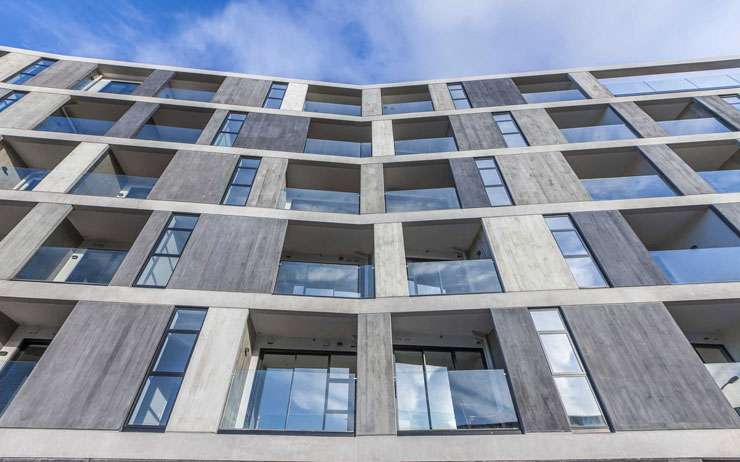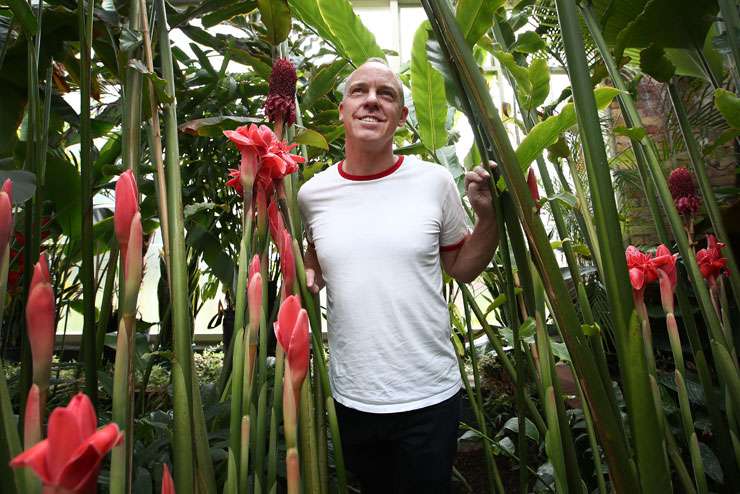Auckland’s shake-up of its planning laws is likely to increase the value of land around the city’s public transport hubs as developers take advantage of proposals that would allow them to build more high-rise apartments.
The New Zealand Herald has reported that under Auckland Council’s proposed planning changes, developers would be able to build six-storey towers within a 15-minute walk of the central city and a ten-minute walk of every train station on the western, southern and eastern rail lines and stops along the Northern Busway.
READ MORE: Find out if your suburb is rising or falling
Increased intensification around existing transport hubs is seen as key to solving the city’s housing shortage and calm house price inflation.
Start your property search
Developers are already responding. In Auckland’s Onehunga, Lamont & Co announced that it was building an eight-level, $80 million apartment tower on the site of the suburb’s old workingmen’s club, across from the rail station and near the already completed Fabric apartment development.
Developers Ockham Residential are also planning to build 210 apartments, including 87 KiwiBuilds in the same suburb. The group hs long championed locations next to transport hubs, with its Station R build close to the transformed Mt Eden station and the Hypatia apartment building next to Grafton station.
The population density that comes with these new developments near transport hubs puts more foot traffic on the streets, which supports local businesses, and creates safer streets and train stations, says Hayley Fitchett, director national planning at Kāinga Ora.
What’s more, that bigger population drives patronage on public transport resulting in more frequent services, which further encourages investment in the transport, raising the quality, she says.
“It's a virtuous circle. We'll end up with these communities that are really rich in all the wonderful things that make a really positive community where people interact well, where there's lots of things to see and do, and it's very easy to connect to the wider city or town.”
Fitchett says the Auckland Unitary Plan has helped the brakes come off development in the past five years. Developers have responded. “Now you have an increasing number of really high quality apartment developments right by train stations, up and down the Western and Southern lines,” she says.

Ockham Residential’s Station R development next to Mt Eden station. Photo / Supplied
The Merchant Quarter in New Lynn in the mid 2010s was an early example of the trend to build good quality, but denser living near transport hubs. Nearby Avondale is now seeing explosive growth thanks to the electrification of the train line, says Fitchett. Many public transport hubs such as Otahuhu, Panmure, and New Lynn have undergone makeovers in recent years, creating more inviting environments for users.
The key tipping point that makes many denser housing developments near transport hubs a success is having “turn up and go” transport where users don’t need to check the timetable and wait (too long) for a service, says Fitchett.
“That turn up and go frequency is absolutely critical in terms of persuading people that public transport is a positive choice (when they) think about ‘where we might I buy my home’.”
She adds: “We've found that developers sell their apartments more quickly where there is transit nearby, which encourages them to look out for other opportunities.

Mark Todd: “I think the CRL is going to add a lot of value to apartments around the rail network.” Photo / Fiona Goodall
“(Transport links) will quite often feature that in their marketing materials as well. I see that as a sign that they are recognising the connection between people seeing that there's a value added, and a reason why they might pick that apartment over an apartment further away from transit hub.”
Kāinga Ora holds sizeable chunks of land near hubs such as Middlemore, which has a train station on the Southern and Eastern lines. “We are actively seeking to invest, and develop around the train stations, because they’re such fantastic places to live. Kāinga Ora's focus (is) on these more sustainable locations that are enabled through really high quality transport. We really have to be at the leading edge of investing in transit rich environments.”
Fitchett says developments around transit routes are great for Kāinga Ora’s customers. It means they don’t need to own as many cars, and it gives them easy access to jobs and facilities. Likewise private buyers are often encouraged can cut out a car, saving themselves up to $5,000 a year.
Ockham Residential made headlines when it built the Daisy apartments with no carparks. Earlier developments such as The Isaac often had two carparks per apartment. Co-founder Mark Todd says he has noticed over time that the residents in The Isaac have fewer and fewer cars and the car park has increasing numbers of empty spaces.

Construction work on the CRL's Karangahape Station. Photo / Michael Craig
All but one of Ockham’s developments have been located near to transport hubs, particularly train stations, says Todd. “I love train stations. Hypatia on Khyber Pass is 20m from the train station. Set Buildings is a few blocks from the train station in Avondale. Aalto, which was just launched, is 400 meters from the Morningside train station.
“I think the CRL is going to add a lot of value to apartments around the rail network when the frequencies and trains have doubled and tripled,” he says. Todd is currently developing the Star Newton near the Karangahape Station.
He says New Zealand is catching up with the rest of the world in zoning provisions, which allow developers to build density and height around high value transport routes.
- This content was created in partnership with Kāinga Ora








